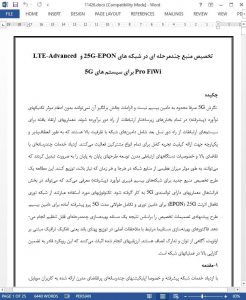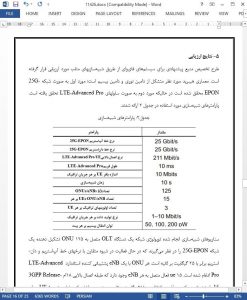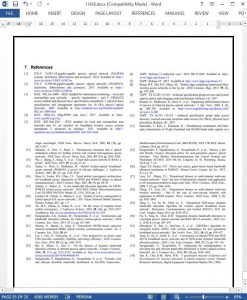Abstract
The 5G vision is not restricted solely to the wireless domain and its challenging requirements cannot be fulfilled without the efficient integration of cutting-edge technologies in all portions of the telecommunications infrastructure. The promoted architectures for next generation telecommunications systems involve high capacity network domains, which operate flexibly and seamlessly to offer full quality of experience to all types of subscribers. The proliferation of highly demanding multimedia services and the features of modern communication devices necessitate the development of end-to-end schemes which can efficiently distribute large amount of network resources anywhere and whenever needed. This study introduces a new resource allocation scheme for cutting-edge fibre-wireless networks is introduced that can be applied in the fronthaul portion of 5G-enabled architectures. The adopted technologies are the forthcoming 25G-Ethernet Passive Optical Network (EPON) for the optical domain and the 5G-ready long-term evolution -Advanced Pro for the wireless domain. The proposed scheme performs allocation decisions based on the outcome of an adjustable multi-stage optimisation problem. The optimisation factors are directly related to the major considerations in bandwidth distribution, namely priority-based traffic differentiation, power awareness, and fairness provision. The conducted evaluations prove that this approach is able to ensure high efficiency in network operations.
1 Introduction
With the proliferation of advanced network services and especially the modern demanding multimedia applications offered to mobile users, the need for highly efficient access networks has emerged. The primary aim is to provide subscribers with advanced quality of experience and the ability to take full advantage of their state-ofthe-art smart devices (e.g. high-resolution big screen smartphones) in order to consume and generate large volumes of traffic with extensive energy autonomy anywhere at any time. On the telecommunications provider side, it is evident that there is a clear shift towards multimedia services, content delivery networks, and resource tenancy. Hence, it becomes apparent that the high capacity core infrastructure at the backhaul network needs to be seamlessly, flexibly, and efficiently interconnected with the fronthaul and the radio access networks. The ultimate objective is to enable end-toend management of the network resources, which can be effectively assigned to subscribers (focusing on mobile users) ensuring high performance, power efficiency, and fairness.
6 Conclusion
An efficient, fair, and power-aware resource allocation scheme for cutting-edge FiWi networks was proposed in this paper. An adjustable multi-stage optimisation technique was introduced for prioritising traffic and effectively distributing bandwidth considering UEs' energy consumption. According to the adopted architecture, the OLT solves the corresponding optimisation problem to assign resources to end-users through ONUs/eNBs. The scheme was evaluated via a simulated 25G-EPON and LTEAdvanced Pro hybrid network scenario. The results have shown that it can achieve high channel utilisation, guarantee service for high priority streams, fairly assign resources, and favour lowpower transmissions. It was also demonstrated that by considering/ ignoring specific optimisation factors it is possible to dynamically tune network behaviour. Regarding the solution process of the optimisation problem, technical feasibility has been justified on the grounds that the problem is broken down to low complexity linear and quadratic programming sub-problems. The overall adopted concept is in line with the C-RAN architecture for the fronthaul of 5G hybrid networks.











